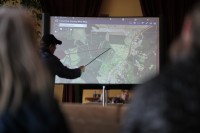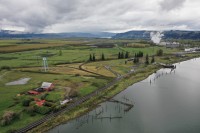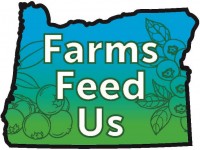What's NEXT: A massive, polluting refinery in the sensitive Columbia River Estuary at Port Westward.

The problem
Houston-based company NEXT Renewable Fuels’ (NEXT) wants to build a non-conventional diesel refinery in the Columbia River Estuary near Clatskanie, Oregon. Columbia Riverkeeper opposes this proposal as it would have significant impacts to climate, habitat, and local farms.
At 1.15 million tons of carbon pollution each year, a proposed non-conventional diesel refinery, NEXT Energy, would be one of Oregon’s largest emitters of greenhouse gas pollution. A large portion of this pollution comes from fracked gas used to make and heat hydrogen.
We won’t go down without a fight!
Despite NEXT's propaganda, this refinery actually runs on fossil fuels; the refinery would consume as much fracked gas as the entire city of Eugene, Oregon. Preventing new fossil fuel infrastructure is a critical task to protect our climate. If fossil fuel corporations build new infrastructure—shipping terminals, pipelines, refineries—they will lock us into decades of fossil fuel use at a time when we must rapidly move toward clean energy and fewer petrochemicals.
Frequently Asked Questions: Next Energy
What is proposed?

The refinery would be one of the largest producers of non-conventional diesel on the West Coast. NEXT could make diesel from things like seed oils, animal fats, fish waste, or waste cooking oil, rather than petroleum crude oil.
- Through an energy-intensive process—using significant amounts of fracked gas, electricity, and water—the refinery would produce up to 50,000 barrels per day of diesel and other fuels.
- NEXT would use ships, trains, and trucks to bring in raw materials and carry away diesel made at the refinery.
- A 400-car rail yard would serve the refinery, adding a significant number of long trains to the Highway 30 corridor.
- The project would include a 400-foot-tall flare stack, which would tower above the Port Westward area, emitting unhealthy, smog-forming pollution.
Is this “renewable” diesel?
No. NEXT’s refinery would burn and use large amounts of fracked gas, a non-renewable fossil fuel. NEXT has also not committed to using renewable or waste feedstock such as waste cooking oil or fish carcasses. The term “renewable diesel” is therefore misleading when applied to NEXT.
What's the current status of NEXT?
We can stop this polluting project. Although some local and state permits have been issued, state and federal decision-makers still have the authority so say “no” to NEXT. In September 2022, Oregon DEQ denied NEXT’s request for a Clean Water Act permit due to NEXT’s application being riddled with errors and inconsistencies. In October 2022, the Oregon Land Use Board of Appeals (LUBA) invalidated a key land use permit for the project’s 400-car rail yard. The Army Corps of Engineers has yet to release a draft environmental impact statement (EIS). The public will have an opportunity to comment on the EIS in 2024.
Resources:
- What if you could stop tons of pollution?, Blog, July 28, 2023
- NEXT pulls railyard application, plans to refile, The Chief, July 28, 2023
- Local Farmer, Farm Protection Group, and River Advocates Challenge Rail Yard For Proposed Refinery at Port Westward, Blog, April 13, 2022
- FAQ About Next Energy, Blog, November 17, 2022
- In September 2022, Oregon DEQ denied NEXT’s request for a Clean Water Act permit
- Local Farmer, Farm Protection Group, and River Advocates Challenge Rail Yard For Proposed Refinery at Port Westward, Blog, April 13, 2022



